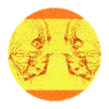
Charting the path to a biologically informed system of mental illnesses
Willa Goodfellow ~ Mar '20
A moonshot exploring the human brain at single-cell resolution
Andrew Neff ~ Mar '20
Written by Andrew Neff
April 2019
Ocean's Eleven Italians
or, Multidimensional Visual Statistical Learning

To all interested parties, it came as a surprise when MGM announced plans to release the cross-over heist movie of a generation, George Clooney’s Daniel Ocean pairs up Mark Wahlberg’s Charlie Croker for Ocean’s Eleven Italians. In the opening, Wahlberg’s overlooking the canals of Venice from his criminally-financed hotel suite. As the water ripples in and out of focus, a light brown gondola passes with a man crooning “'O sooooooooooole miiiiio”. Minutes later, a darkly stained gondola singing “Volare, ooooh ooooh”. Shortly after, a black gondola, carrying a group of variously instrumented musicians leaning and shuffling throughout the boat, one singing “Tu Vuò Fa' L'Americano”. Wahlberg, only slightly suspicious, returned to reading his newspaper, and as the hours passed, gondolas pass by of all colors holding italian language crooner’s of all sorts. But some time later, on account of Wahlbergs keen sense of danger, it did not escape his attention that again, a light brown gondola emanating “'O sooooooooooole miiiiio” was followed by the dark brown “Volare, ooooh ooooh” and the peppy black “Tu Vuò Fa' L'Americano”. He couldn’t quite remember the original sequence, but something about the order of these crooning italians was suspicious, Clooney had to be behind it.
Humans are good at pattern recognition, right? Say you were to create a sequence of colored shapes, and within that sequence you embedded a repeatable triplet pattern, shape X always follows shape Y which always follows shape Z. You then, scientist that you are, allowed your research subjects to familiarize themselves with the sequence by viewing this series, one shape after another. After familiarization, you then decide to test them by showing each subject a new series of colored shapes. In this test series, embedded within randomly ordered colored shapes is that same embedded triplet pattern from the familiarization phase. Every few shapes, you’ll stop and ask your subjects, does that last sequence look familiar to you? Because of what psychologists call Visual Statistical Learning, people are able to tell you which sequences they sort-of remember from the familiarization phase. Psychologists call this Visual Statistical Learning, on account of the “statistical regularity” with which one object follows another - people, on the other hand, call this pattern recognition, on account of the pattern recognition.

But Clooney, after his first plot was foiled, went back to the drawing board. He couldn’t help but think that he was providing too much information. From his terrace, Wahlberg could both see the gondola’s color and hear the paddling crooners song. What if he were to try the deception again, this time decoupling which song goes with which gondola? Clooney would enlist technical specialist ethnic minorities to execute this segment of the plan.
It’s long been understood that Visual Statistical Learning works when colors and shapes were presented together. Nicholas Turk-Browne and a group of researchers at Yale decided that was great, but what about when shape and color are decoupled? Might it be that our capacity to decipher patterns relies on multiple features simultaneously, both color and shape? To test this, during the familiarization phase, subjects were presented the same series of colored objects as before, however, this time, during the testing phase, only a single feature was presented, uncolored shapes, or plain colors (presented as circles). Results were in - people can’t do it, which started leading scientists to think that pattern recognition occurs at the level of “object”, with all its features in-tact, rather than on each of the features of objects.

Want more Brain Science in your life?
Figured you did,
support Mind & Brain Illustrated today on Patreon.
5% of our annual proceeds are donated to the John Templeton Foundation.
But here’s where MGM decided to take a big risk, as Clooney’s statistician convinced him that they needed to try one more test, so as to have data for future 12 and 13 member foreign themed crossover robberies. The statistician told Clooney that he was an excellent international criminal, best in the business, but he’s no cognitive scientist. In order to further probe the limits of Wahlberg’s pattern recognition capabilities, they needed to understand one more question. Did Wahlberg fail to recognize the crooners, independent of their gondola, because his pattern-recognition brain-ware only functions on objects, that is, whole objects with multiple features? Or instead, did Wahlberg fail because he had half as much information to go on? It was a difficult concept to grasp, the statistician explained to Clooney, and just as audience members began walking out of the theater, Clooney’s tech guy entered the scene describing his successful acquisition of the tunnel boring equipment, and that should the crew need to resort to plan B he’d be at Clooney’s service.
Turk-Browne and company’s motivation was simple - test the idea of “object-based” visual statistical learning, push it as hard as they could until it breaks - explore as many possible alternative explanations as they could. The test itself was fairly straightforward. This time, the familiarization phase was slightly changed, as two separate repeatable patterns were embedded. In the test phase, however, the features of these patterns were switched, one patterns color went on the other patterns shape, and vice-versa. If subjects could still identify the pattern, then Visual Statistical Learning was likely feature based, and failures in previous experiments would be attributable to subjects having less information at their disposal in the test phase. The results here began to complicate matters, as subjects could identify remixed-patterns in the test phase better than chance, albeit, not quite as well as when colors and shapes remained paired in the test phase.

This is part of a series on reproducible psychological research.
We've started a reddit community where you can get much more, please check it out, and post your thoughts.
Neither Clooney nor Wahlberg were completely satisfied. Wahlberg was primarily confused about what Clooney was trying to accomplish in the first place. Clooney, more contemplative, plotting, was distracted by how to fit the tunnel boring equipment into this operation. But both were also distracted by a similar set of questions. As Clooney retired to his countryside villa for a period of somber rumination, it occurs to him that so many questions remain. His experiment was only conducted on canoe triplets, how about canoe doublets or quadruplets? Or, what if he tried testing features besides song and gondola color? Maybe even, as his statistical plot is rehashed, he could focus on a different set of objects, say cars or planes, expensive art maybe, something with a different symbolic importance to Wahlberg. And as Wahlberg began contemplating on his own, he began to wonder about technical issues. What about the amount of time in between the presentation of each object - what if something happened in between observing one object and the next? Did Clooney’s tests apply to patterns that emerge over the course of a day, or a week? Is human pattern recognition capacity the same when considering Clooney's focused experiments as in his everyday life?

Next time: Researchers say that emotion can be driven by two things; maybe we strive for happiness because it feels good, or maybe we aim for an emotion because it’s useful. From the feel-good perspective, anger doesn’t seem to make sense, because who really likes being angry? Nonetheless, we see examples in the real world where expressing anger could be useful; disciplining your kids, chewing out a subordinate, or preparing for an aggressive activity - we can see the value, it makes sense that we’d choose anger. Researchers put this idea to the test, do people choose to be angry for instrumental motives, and more importantly, does getting angry improve our performance?
References:
-
Turk-Browne, Nicholas B., et al. "Multidimensional visual statistical learning." Journal of Experimental Psychology: Learning, Memory, and Cognition 34.2 (2008): 399.



































